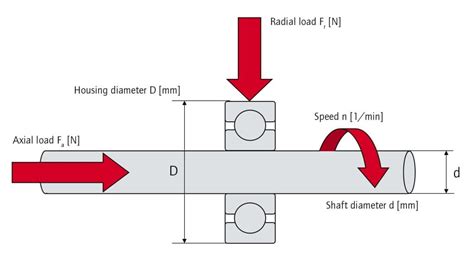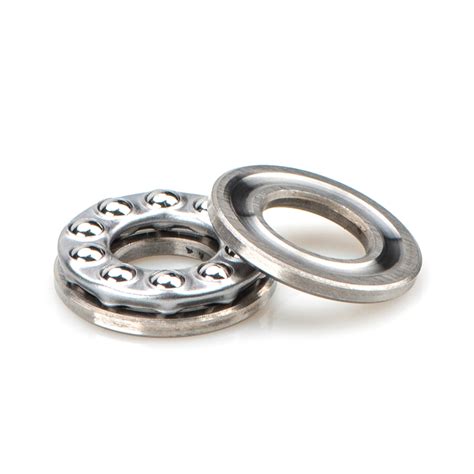Axial Bearing: The Unsung Hero of Rotating Machinery
Axial bearings, the unsung heroes of rotating machinery, silently toil away, bearing the weight and thrust loads that would otherwise destroy their shafts. Their intricate design and precision engineering make them essential components in a wide range of applications, from high-speed turbines to heavy-duty industrial machinery.
Understanding Axial Bearings
Axial bearings, unlike their radial counterparts, are designed to withstand forces acting parallel to the shaft axis. They come in various forms, including:
-
Ball thrust bearings: Use hardened steel balls to transmit axial loads.
-
Roller thrust bearings: Similar to ball bearings but use cylindrical rollers.
-
Tapered roller bearings: Utilize cone-shaped rollers to handle heavier loads.
Each type offers unique advantages and is selected based on specific application requirements.

Applications of Axial Bearings
Axial bearings find widespread use in industries such as:
-
Aerospace: Thrust bearings support aircraft engines, propellers, and other rotating components.
-
Power generation: Support large turbines and generators in hydropower and wind power plants.
-
Heavy machinery: Handle axial loads in industrial gearboxes, crushers, and conveyor systems.
-
Automotive: Used in transmissions, differentials, and other drivetrain components.
Benefits of Axial Bearings
-
High load capacity: Handle significant axial forces, minimizing shaft deflection and damage.
-
Low friction: Precision machining and advanced lubricants reduce friction, improving efficiency and extending bearing life.
-
Compact design: Provide a compact and space-efficient solution for axial load support.
-
Durability: Constructed from durable materials and manufactured with high precision, ensuring long-lasting performance.
Common Types of Axial Bearings
| Type |
Features |
Applications |
| Single direction |
Support axial loads in one direction |
High-speed turbines, pumps |
| Double direction |
Withstand axial loads in both directions |
Gearboxes, automotive transmissions |
| Angular contact |
Can handle both axial and radial loads |
Machine tools, precision instruments |
How to Select Axial Bearings
Choosing the right axial bearing involves considering factors such as:
-
Axial load: Determine the magnitude and direction of the anticipated load.
-
Shaft speed: High speeds require bearings capable of withstanding centrifugal forces.
-
Temperature range: Bearings must operate within their specified temperature limits.
-
Lubrication method: Select bearings compatible with available lubrication systems.
Installation and Maintenance
Proper installation and maintenance are crucial for optimal axial bearing performance.

-
Installation: Follow manufacturer's guidelines for proper bearing mounting, lubrication, and alignment.
-
Lubrication: Use recommended lubricants and lubrication intervals to ensure smooth operation and prevent premature wear.
-
Inspection: Periodically inspect bearings for wear, damage, or contamination.
Common Mistakes to Avoid
-
Overloading: Applying excessive axial loads can damage bearings and shafts.
-
Improper lubrication: Using incorrect lubricants or lubrication intervals can lead to bearing failure.
-
Misalignment: Misaligned bearings can cause uneven load distribution and premature wear.
-
Contamination: Keep bearings clean and free from contaminants to extend their lifespan.
How to Approach Axial Bearing Selection Step-by-Step
-
Determine load and speed requirements: Calculate the expected axial load and operating speed.
-
Choose bearing type: Select the appropriate bearing type (single direction, double direction, etc.) based on load and direction requirements.
-
Consider capacity and dimensions: Check the load capacity of the bearing and ensure it fits within the available space.
-
Select lubrication method: Determine the type and frequency of lubrication required.
-
Install and maintain properly: Follow manufacturer's instructions for installation and maintenance to optimize performance.
FAQs
1. What is the difference between a radial bearing and an axial bearing?
- Radial bearings support loads perpendicular to the shaft axis, while axial bearings handle loads parallel to it.

2. What factors affect the lifespan of an axial bearing?
- Load, speed, lubrication, alignment, and contamination all influence bearing life.
3. How can I prevent axial bearing failure?
- Proper selection, installation, lubrication, inspection, and maintenance are crucial for preventing premature failure.
Humorous Stories and Lessons Learned
1. The Loose Bearing
- A mechanic installed an axial bearing loosely, causing it to slip and generate excessive noise. The lesson: Proper tightening is essential to prevent bearing damage and noise.
2. The Overloaded Bearing
- A heavy machine was overloaded, causing an axial bearing to fail catastrophically. The lesson: Avoid excessive loading to ensure bearing longevity.
3. The Dusty Room
- Bearings installed in a dusty environment became contaminated and failed prematurely. The lesson: Keep bearings clean and lubricated to prevent abrasive wear.
Conclusion
Axial bearings are indispensable components that play a vital role in rotating machinery. Understanding their design, selection, and maintenance is essential to ensure optimal performance and extended lifespan. By following best practices, engineers and technicians can harness the power of axial bearings to design and operate efficient, reliable, and long-lasting rotating systems.


